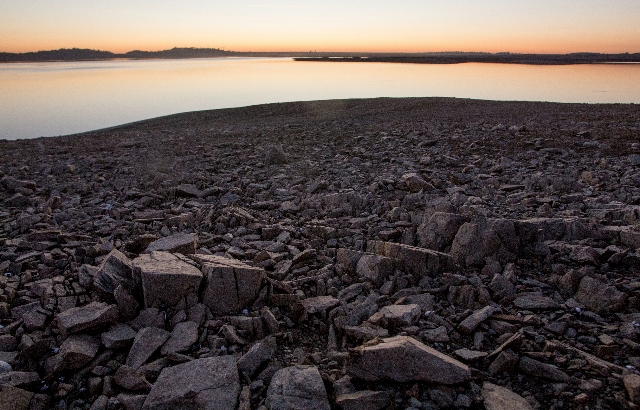The State of California has been officially declared in a drought State of Emergency on Jan. 17 by Gov. Jerry Brown.
According to the Governor’s Office of Emergency Services, dry conditions were experienced statewide in 2012 and 2013 based on reports by the U.S. Drought Monitor and the Department of Water Resources.
Regions of the Central Valley and Southern California have been experiencing extreme drought conditions. Additionally, on the eastern border, there are record-low snowpack measurements, about 84 percent below average.
“The record has been surpassed for most days during the rainy season without rain,” said Clark Blanchard, spokesman for the Natural Resources Agency. “This is the driest that California has been since 1884.”
The effects of the drought are visible in lakes and mountains where the landscape requires precipitation to retain its functional and recreational purposes. Locally, the severity is evident at Folsom Lake, Lake Tahoe, the Sierra Nevada and agricultural establishments around Sacramento and in central California.
“Some municipalities have prepared accordingly,” said Nancy Barker from the UC Davis Extension’s Department of Land Use and Natural Resources. “However, most communities are high and dry; for example, places that take water from Folsom or the American River are in danger of their pipes running dry.”
According to the official written Proclamation of the State of Emergency, the magnitude of the severe drought conditions presents threats beyond the control of the services, personnel, equipment and facilities of any single local government.
“We can’t make it rain,” said Governor Brown in the State of Emergency proclamation. “But we can be much better prepared for the terrible consequences that California’s drought now threatens, including dramatically less water for our farms and communities and increased fires in both urban and rural areas.”
During 2013, Brown issued an Executive Order, directing state water officials to accelerate the review of water rights and transfers; he also created a Drought Task Force, to review expected water allocations.
While the government of California is taking precautions and planning ahead to reduce the negative effects of the drought and its current and possible future predicaments, it is impossible to do so without the cooperation of California’s residents.
“We hope to provide education on drought conditions,” said Andy Roy of the UC Davis Extension’s Department of Land Use and Natural Resources. “This is the driest that California has been in almost 40 years. We have had all this time to prepare for a drought, but has it really helped?”
The California Department of Water Resources is a co-sponsor with the Association of California Water Agencies in a statewide campaign called Save our Water. Details can be found at saveourh2o.org.
“A couple ways that the general public can reduce their water usage would be to shorten showers from ten minutes to five,” Blanchard said. “Make sure to do full loads in the washing machine and the dishwasher. Cutting back watering would also be beneficial; if you have a green lawn from watering, you’re doing something wrong.”
Easy tips from the Save our Water campaign include: turning off the faucet when brushing teeth, shaving or washing hair, soaking pots and pans, throwing unused water/ice cubes on a plant instead of down the sink, washing dark clothes in cold water and watering outdoor landscapes deeply but less frequently.
“Los Angeles has been upholding further restrictions as far as water usage,” said Ted Thomas, of the California Department of Water Resources. “They have been heavily encouraging water storage projects, and as a result, are in less danger than many other areas.”
Seeing how Los Angeles, one of the drier areas in California, is able to collaboratively reduce risk, exemplifies the potential for other regions of California to do the same.
“The current conditions are very severe,” Thomas said. “Keeping in mind that we have lost December and January, the concern is high but the conditions could change.”
The UC system is hoping that the universities and students will reduce water use by 20 percent by 2020.
“The UC has long been a leader in conservation efforts,” said UC President Janet Napolitano in a press release. “This new 2020 goal complements the University’s Carbon Neutrality Initiative and its broader award-winning sustainability efforts. UC is prepared to play a leadership role in response to California’s current water crisis by demonstrating water sustainability solutions to the rest of the state.”
According to weather.com, there is a chance of rain in Davis on Jan. 30 and Jan 31. This is the first sign of hope that there has been to alleviate this drought in months.
“We are in an unprecedented, very serious situation,” Brown said at a press conference. “People should pause and reflect on how dependent we are on the rain, on nature and on one another.”





